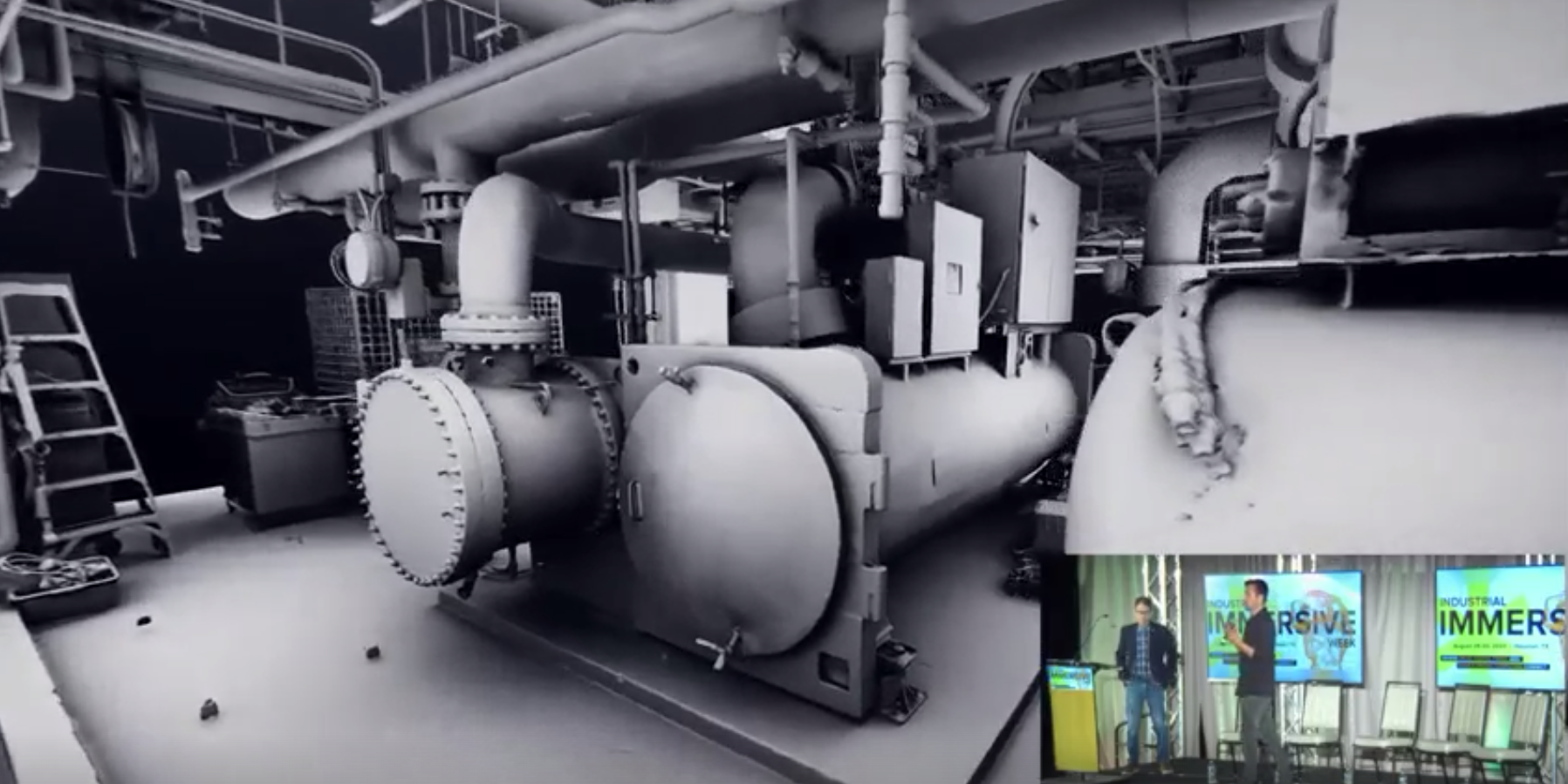Session Recap: Industrial Digital Twins and Reality Capture for Energy and Manufacturing Assets
/At this year’s Industrial IMMERSIVE Week, we heard a panel of asset owners talk about how they use digital twins and reality capture in the session, “Industrial Digital Twins and Reality Capture for Energy and Manufacturing Assets.”
The panel was moderated by Randell McNair of Digital Twin Management for Complex Facilities, and panelists were:
Peter WJ Baxter, visCo
Benjamin Butchko, Digital Twin Consulting
Alexander Loidolt, ViewAR
Scott McGowan, Kestrel Aerial
Nicolas Morency, Prevu3D
IIW On Demand
Have FOMO from the 2023 Industrial IMMERSIVE Week? View all of the sessions from the on-demand!
This session is especially worth watching on demand to see all the reality capture and digital twin examples for yourself.
The Key Points
The service providers on the panel emphasized the importance of customizing data collection and digital twin outputs to what each company and application requires. Some may need detailed 3D scans while others need basic photogrammetry.
Here were other discussion points and best practices.
Scanning Technologies: The panelists all use different scanning methods for different types of digital twins. They agreed that the scanning method should be driven by the goals for the data.
“We use anything from high resolution photography, HD video, thermal—primarily we use a lot of lidar, and then we also use OGI for methane leak detection,” said Scott McGowan of Kestrel Aerial.
Alexander Loidolt of ViewAR said all of his company’s clients start with a 3D scan. “Some facilities need a full 3D scan while others don’t. From there, we are starting to integrate other types of scans like engineering models for cables and water runs.”
Frequency of Updates: The frequency of updating digital twins varies widely depending on the industry and specific use cases. In some cases, live data is most valuable; in others, quarterly or even monthly updates are necessary; while in others, updates may occur every three years.
Nicolas Morency of Prevu3D pointed out that CAD models can be a start, but digital twins are going beyond that: “Over the last seven years, scanning has got better and faster, and technology evolved so we are now able to deliver a benefit from that scan beyond the single aspect of modeling for an engineering process.”
Repeatability and Consistency: Maintaining a consistent baseline for digital twins is crucial for accurate analysis over time. This often involves creating a repeatable process to ensure that data collected during each update aligns with the initial baseline.
Empowering End Users: Panelists discussed the importance—when appropriate—of empowering end users to update digital twins by taking photos of assets in the field. This approach allows for more frequent updates without relying solely on comprehensive periodic scanning.
Morency said, “If you have a high-quality base map of your site, then you can empower the operator on the people on site to notice and put the notes. They will swipe their phone over, see the twin, notice the difference, add a comment to be updated.”
Asset-Level Updates: Depending on the situation, updates may focus on specific assets or areas rather than on entire facilities. This targeted approach allows organizations to prioritize updates based on their needs.
Data Security and Ownership: Panelists acknowledged the importance of data security and ownership. Organizations must have control over their data and ensure that it is protected, especially when working with sensitive information. This area of the industry is still developing.
When moderator Randell McNair asked the panelists about security, the answers were similar.
Benjamin Butchko of Digital Twin Consulting said, “It's a huge elephant in the room that many times is glossed over until it's too late or there’s already a problem.”
Peter Baxter of visCo touted the benefits of cloud computing for security: “It solves a lot of security issues—and takes the pressure off clients—especially with a lot of operators. For example, Azure comes with a lot of benefits especially with the SSID and two-factor security.
Collaboration and Governance: Establishing a clear governance strategy upfront is essential. Collaboration between various stakeholders, including security and legal teams, is necessary to manage the risks associated with data updates.
Integration and Version Control: The group highlighted the need for effective integration of data updates into existing systems and processes. Version control and documentation are crucial for tracking changes and ensuring data integrity.
Emerging Technologies: The panelists discussed emerging trends, such as using augmented reality (AR) and artificial intelligence (AI) to detect changes and capture and use data more effectively.
The panel was a great discussion about establishing and maintaining digital twins with a combination of technology, strategy, and collaboration. Organizations must establish clear processes and governance structures to ensure the accuracy and security of their digital twin data. Empowering end users and adopting innovative technologies are key steps in making the updating process more efficient and accessible.
This session is absolutely worth watching to hear the discussion and back-and-forth conversation. Access this and other sessions on demand.
2023 IIW Recap
Read the full recap of the 2023 Industrial IMMERSIVE Week, including attendees’ thoughts, media coverage, and more. Plus, find on-demand access to sessions.
Access this session and more from the 2023 IIW on-demand!



